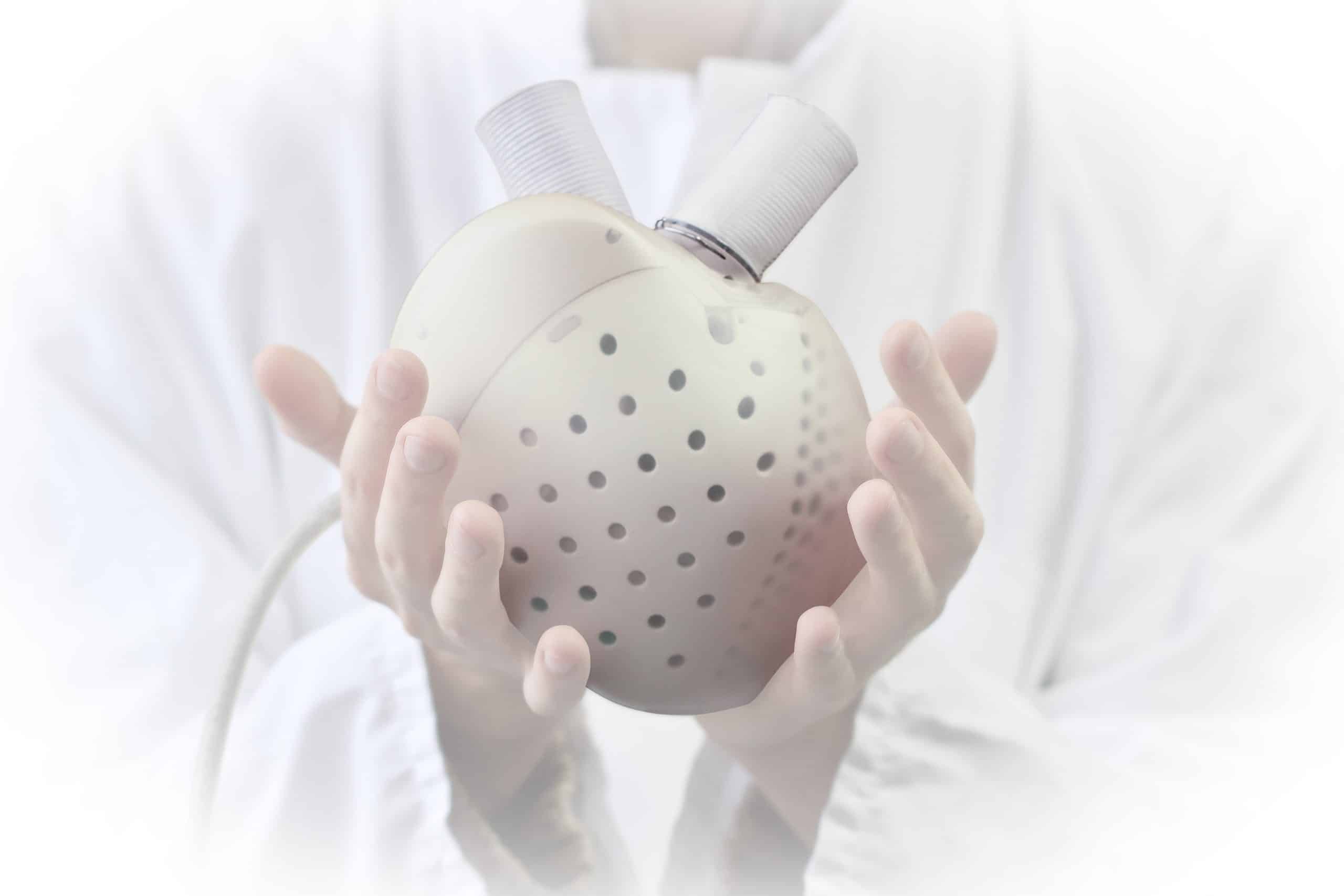France’s high-speed train (the TGV), Carmat’s artificial heart, the Rafale fighter jet, and Thomas Pesquet on the ISS are just some of the examples of French innovation and creativity cited by President Emmanuel Macron in his “Dreams are Possible” speech on 12 October.
Carmat’s dream is called Aeson. Professor Alain Carpentier, a specialist in heart surgery and organ transplantation at the Georges Pompidou European Hospital in Paris, came up with the idea for this artificial heart 25 years ago. Today, he is Scientific Director at Carmat, a firm he set up in 2008 with Matra Défense (EADS Group) and Truffle Capital. The result of this unusual collaboration between research scientists and aerospace and electronics engineers was France’s first ever artificial heart prototype.
Following its market launch in the summer of 2021, “the next step is to turn a profit,” says Carmat’s CEO Stéphane Piat, “because, while our investors are very happy, they’re obviously expecting a return on their investment.” The firm, which went public in 2010, has had to raise €400 million in shares and loans to bring Aeson into being. The four main investors are Airbus, Lohas, Holding Lyreco and Santé Holding.
“Carmat offers a unique solution to the growing public health problem that is heart failure. It is incredibly moving to see very sick patients regain their quality of life thanks to our artificial heart,” says Stéphane Piat, CEO of Carmat
Around 70% of the patients implanted with Aeson have survived more than six months after their operation. Heart failure is still the world’s leading cause of mortality. In the United States and France alone, it is believed to affect 200,000 people… and there are just 5,500 hearts available for transplant.
Patients may have to wait several years for a new heart, and Aeson is indicated as a bridge to transplantation. The artificial heart is grafted onto the atria of the native heart. Both ventricles and all four valves are replaced. To prevent compatibility problems, it has a hydraulic system that prevents the blood from coming into contact with plastic or metal. Just like a human heart, it self- regulates and adjusts the blood flow in real time. It is pulsatile and is not susceptible to stroke, bleeding, or infection.
Aeson received its CE mark in Europe in December 2020 but is still in the clinical trial phase in the United States. In France, another study, EFICAS, is scheduled to start by the end of this year, in a cohort of 52 patients.



